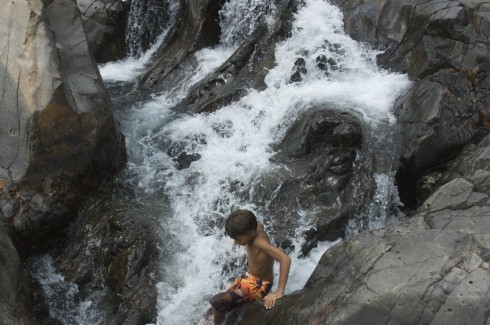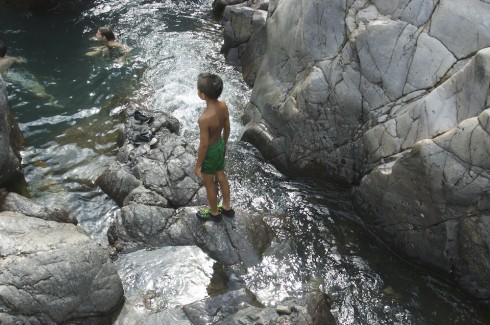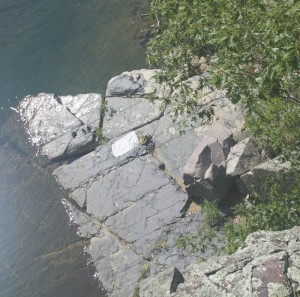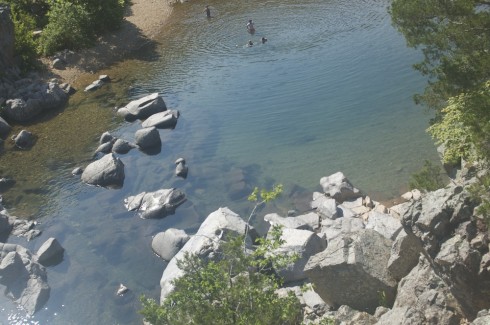
First off, the Shut Ins are narrower constrictions in the river valley formed when stream flows into an area of harder rock. The hard rock, in this case an old (1.5 billion year old) rhyolite flow, is relatively resistant to erosion, especially the side-to-side erosion that flattens out little flood plains as small rivers meander through the foothills of old mountains like the Ozarks. So the stream only erodes downward through the hard rocks creating a narrow gorge. As they say here: the river’s “Shut In”.
When I told people that I wanted to do a few camping trips this summer, the number one recommendation was the Shut Ins. And I can see why. I took my boys and they had an awesome time.
“It’s like the City Museum. Only real.”
— Overheard at Johnson’s Shut Ins
The Shut Ins are a maze of narrow channels, the old igneous rocks carved smooth by the water and its gravelly bed load over millions of years. A great place for kids to traipse through and explore. I bit like a water-park version of the City Museum in St. Louis.


The pattern of the channels is largely determined by the jointing in the rocks, because the joints offer easier pathways for water and erosion. There are at least two obvious sets of joints in the rocks, but I would not be surprised if they overlay other patterns given how old the rocks are. As it is, however, the erosion through the joints creates lots of neat little chutes.

Since the Shut Ins are only a couple hours away from St. Louis, they’re a pretty popular tourist attraction.

There’s a lot of science that can be done here, however, that would make this a good location for an immersion trip, especially since Elephant Hills State Park (with wonderful spheroidal weathering) is close by. The camping facilities at the Shut Ins State Park are new and quite nice, having been completely rebuilt with some of the $100 million in settlement money from the Ameren power company after the park was flooded by their Taum Sauk reservoir breach in 2005.

It’s certainly worth the visit.
